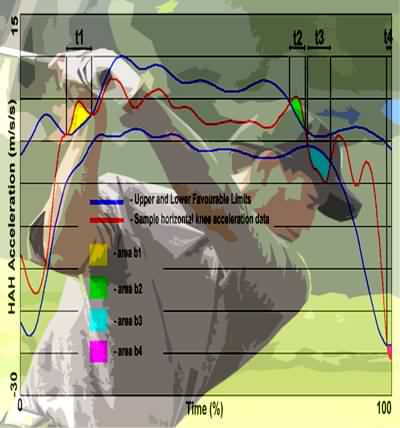| 2003 |

|
YEAR BOOK |
University of Limerick
|
Development of wireless technologies to enhance sporting performance
|

Recent research at the Physical Education & Sport Sciences Department (PESS) has seen the development of a real-time biofeedback system for sport. Research utilising the system has illustrated significant improvements in movement consistency during rowing, movement consistency and accuracy in golf, and overall performance in several basic motor skills. The current system is confined to a laboratory setting and consequently is restricted to a simulated environment, for example ergometer rowing.
To alleviate this limitation, a research partnership was created between the PESS Department and the Electronic and Computer Engineering (ECE) Department. The main focus of the research is to develop a method of delivering real-time athlete-friendly quantitative information to a variety of athletes in their natural environs. The idea of real-time telemetry is not new to sport, but the high cost and relative inflexibility of existing systems has hindered the every day use of this technology by athletes, coaches and sports scientists.
The research being carried out at the University of Limerick aims to develop a system that is relatively inexpensive, and one that offers a high level of flexibility to the end-user. The commercial development of several wireless technologies within the IT sector has provided the technological base for such a system. With the availability of low cost wireless technology and the promising results of the recent research into real-time biofeedback in the PESS Department, the impetus behind an inexpensive and flexible telemetry system that can provide real-time quantitative athlete-friendly biofeedback information is clear.
The benefits of such a system to elite athletes is obvious; real-time biofeedback being provided during every training session will enable the athlete and sport scientist to maximise that athlete's performance potential. As for the novice athlete, it will enable his or her coach to identify and correct faults in technique at an early stage and maximise the athletes' future potential. The system can offer a stimulating alternative to the elite athlete, and technique development at an early stage is an exciting prospect for those promising athletes.
Contact: Dr Ross Anderson, Department of PE & Sport Sciences, University of Limerick;
E-Mail: [email protected] ;
DJ Collins, Department of PE & Sport Sciences and Electronic & Computer Engineering, University of Limerick;
E-Mail: [email protected]